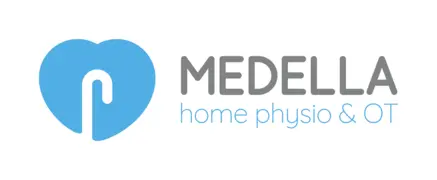Stroke Rehabilitation at Home
Is a loved one struggling after a stroke?
A stroke changes everything in an instant. It’s not just about the loss of movement; it’s the loss of independence. You might be watching a parent struggle to stand up, get dressed, or even make a cup of tea. It is exhausting for them and worrying for you. You don’t have to accept “this is as good as it gets.” Our specialised Stroke Rehabilitation service reignites recovery by treating the whole person: regaining movement (Physiotherapy) and relearning daily skills (Occupational Therapy).
The “Whole Person” Approach to Stroke Recovery
Most services treat the arm or the leg. We treat the life. By combining Neuro Physiotherapy and Occupational Therapy, we ensure you or your loved one builds the physical strength to move and the practical skills to live independently again.
THE PHYSIOTHERAPY ROLE
Our Neuro Physios focus on rewiring the brain (neuroplasticity) to restore movement, strength, and balance.
Gait Re-education: Retraining the brain to walk safely and naturally.
Spasticity Management: Reducing muscle stiffness and tone.
Upper Limb Rehab: Targeted exercises to regain arm and hand function.
Balance Training: Preventing falls and building core stability.
THE OCCUPATIONAL THERAPY ROLE
Our OTs bridge the gap between “being able to move” and “being able to live.”
Self-Care Skills: Techniques to wash and dress independently (one-handed).
Kitchen Confidence: Safety assessments for cooking and making drinks.
Cognitive Support: Strategies for memory, planning, and fatigue.
Equipment: Advice on aids to make daily life easier immediately.
Why treating Stroke at home works best
You cannot learn to live in your own home by practicing in a hospital gym. Stroke recovery relies on neuroplasticity – the brain’s ability to rewire itself. This happens fastest when the tasks are meaningful. By seeing you at home, we practice on your stairs, in your kitchen, and with your furniture. This “real-world” rehab often accelerates progress because every exercise has a direct purpose.
Trusted by Families Across Hampshire, Dorset & Wiltshire
We are incredibly proud of the 5-star feedback we receive from our clients on Google. These independent reviews reflect our team’s commitment to helping loved ones regain mobility and independence through compassionate, effective, and professional care at home.
Related Conditions
Is Dizziness the cause?
View our Vestibular Clinic →
General Mobility Loss
View Elderly Rehab →
Dementia Safety
View Dementia Support →
How do I know if my parent is at risk of falling?
There are usually warning signs before a major fall. If they are “furniture surfing” (holding onto chairs to walk), seem hesitant on stairs, have had a minor stumble in the last year, or express a fear of falling, they are at risk. A comprehensive assessment can identify the specific physical and environmental causes before an injury occurs.
What is the difference between the Physio and OT assessment?
They work hand-in-hand. The Physiotherapist assesses the person (balance, muscle strength, gait), while the Occupational Therapist assesses the environment (rugs, lighting, bathroom safety). By looking at both, we ensure your parent is physically stronger and their home is safer.
Will they need to make expensive changes to their home?
Rarely. We prioritise practical, low-cost solutions. Often, safety can be improved by rearranging furniture, improving lighting with brighter bulbs, or removing trip hazards. If equipment (like grab rails) is needed, we guide you on exactly what to get, but the choice is always yours.
Which areas do you visit?
We provide home visits across Hampshire, Dorset, and Wiltshire. This includes Ringwood, Bournemouth, Poole, Southampton, Salisbury, and the surrounding villages.
